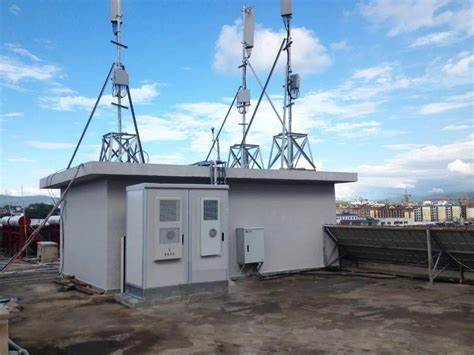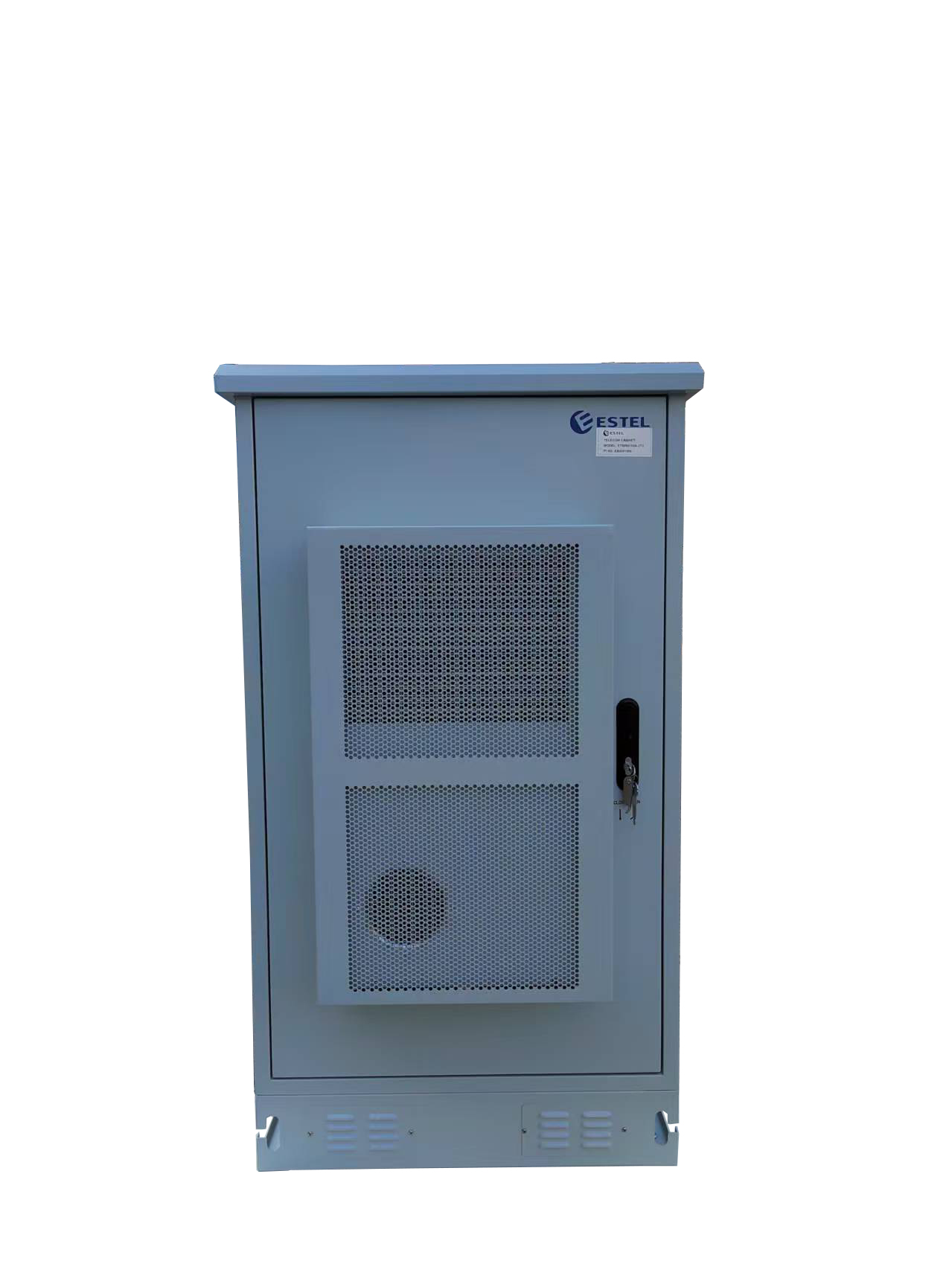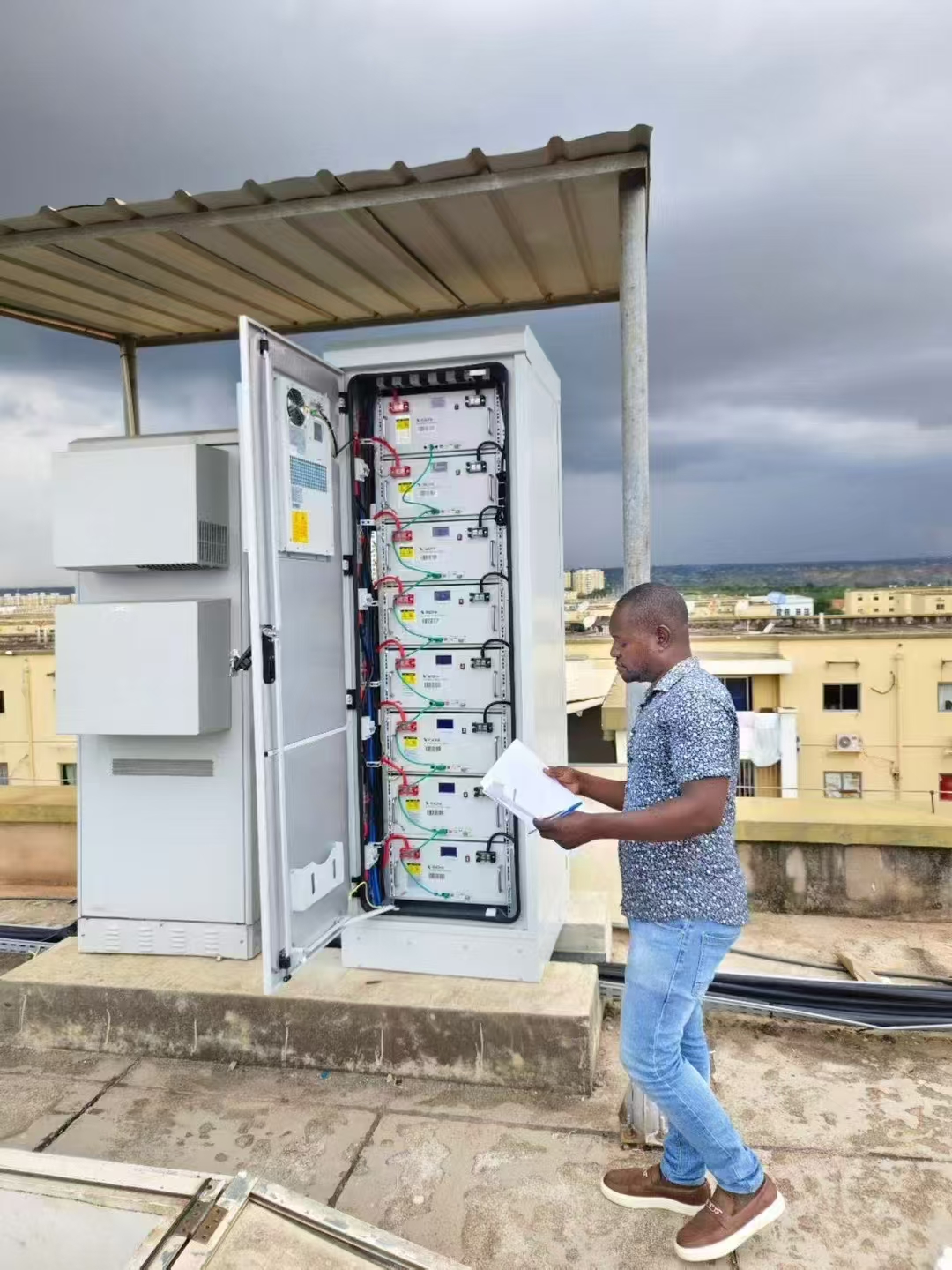Expert Tips for Securing Communication Cabinets in High-Risk Areas

Communication cabinets play a vital role in keeping systems operational during an emergency. When disasters like earthquakes or hurricanes strike, poorly secured cabinets can fail, disrupting critical networks. Ground shaking can cause cabinets to topple, while high winds and flying debris can damage their structure. Choosing cabinets designed for earthquake preparedness and hurricane protection ensures your equipment stays safe. For example, 美洲适合什么样的通信机柜? Cabinets built with durable materials and advanced weatherproofing features provide the reliability you need in high-risk areas.
Key Takeaways
Pick cabinets made from strong, rust-proof materials like coated steel. This helps them last longer in bad weather or earthquakes.
Use the right tools, like special bolts, to keep cabinets steady. This stops them from falling over during earthquakes.
Check cabinets often for damage or rust. Fix problems quickly to keep them working well in emergencies.
Place cabinets far from windows and outside walls. This keeps them safer from flying objects during disasters.
Make a plan for emergencies. Include securing cabinets and having repair tools ready. This helps your systems keep working during tough times.
Understanding the Risks
The Impact of Earthquakes on Communication Cabinets
Ground Shaking and Structural Stress
During an earthquake, the ground's violent shaking places immense stress on communication cabinets. The vibrations can weaken the cabinet's structural integrity, especially if it lacks proper reinforcement. Cabinets made from substandard materials may crack or bend under pressure, leaving your equipment vulnerable. You must ensure that your cabinets are designed to withstand seismic activity to prevent such failures.
Risk of Toppling and Internal Damage
Earthquakes can cause unsecured cabinets to topple, leading to severe damage to internal components. When a cabinet falls, sensitive equipment like servers and routers may break or disconnect, disrupting critical networks during an emergency. Proper anchoring systems, such as seismic anchors, are essential to keep cabinets stable. Additionally, internal cable management and reinforced racks can minimize the risk of damage to your equipment.
The Impact of Hurricanes on Communication Cabinets
High Winds and Flying Debris
Hurricanes bring extreme wind speeds that can wreak havoc on communication cabinets. Wind speeds of 100 mph or more can dislodge cabinet doors, roofs, or other components, exposing internal parts to harsh external conditions. Flying debris, such as tree branches or metal objects, can strike cabinets, causing dents or punctures. Cabinets with robust construction and secure locking systems are crucial for protecting your equipment during a hurricane.
Water Damage and Corrosion Risks
Hurricanes often bring heavy rainfall, which increases the risk of water seeping into cabinets. Water exposure can lead to corrosion, damaging both the cabinet and the equipment inside. Weatherproof seals and enclosures are vital for keeping moisture out. Cabinets with corrosion-resistant materials, such as galvanized steel, provide an added layer of protection. Regular inspections can help you identify and address potential vulnerabilities before the next emergency strikes.
Key Factors to Consider When Choosing Communication Cabinets

Material Durability
Corrosion-Resistant Materials
In high-risk areas, cabinets face exposure to harsh environmental conditions, such as heavy rain and humidity. Choosing cabinets made from corrosion-resistant materials, like galvanized steel, ensures long-term durability. These materials prevent rust and degradation, keeping your communication equipment safe and operational during an emergency. Cabinets with weatherproof coatings offer an additional layer of protection, especially in hurricane-prone regions.
Shock-Absorbing Properties
Earthquakes can generate intense vibrations that damage poorly designed cabinets. Opt for cabinets with shock-absorbing properties to protect sensitive equipment. Features like reinforced frames and internal padding help absorb seismic energy, reducing the risk of structural failure. This design ensures your communication systems remain functional when you need them most.
Mounting and Anchoring Options
Floor-Mounted vs. Wall-Mounted Cabinets
The choice between floor-mounted and wall-mounted cabinets depends on your specific needs. Floor-mounted cabinets offer greater stability and can support heavier and larger equipment. The table below highlights their advantages:
Advantage | Floor-Mounted Cabinets | Wall-Mounted Cabinets |
|---|---|---|
Ability to Store Heavy Items | Yes, can support heavy items like safes | Limited support for heavy items |
Ability to Store Large Items | Yes, supports larger cabinets and shelves | Limited to smaller sizes |
Stability | Strong base for daily wear and tear | Less stable under heavy loads |
In high-risk areas, floor-mounted cabinets are often the better choice due to their superior stability during emergencies.
Seismic Anchoring Systems
Seismic anchoring systems are essential for securing cabinets in earthquake-prone zones. These systems include features like heavy-duty doors with multiple latch points, reinforced steel frames, and integrated floor-mount locations. They also use locking nuts and washers to strengthen rack-mounted components. By investing in cabinets with these features, you can minimize the risk of toppling and internal damage during seismic events.
Compliance with Safety Standards
Industry Standards for Earthquake Resistance
When selecting cabinets, ensure they meet recognized earthquake resistance standards. The table below compares two widely used standards:
Aspect | Telcordia GR-63 | IBC |
|---|---|---|
Purpose | Guidelines for cabinet protection level during earthquakes | Mounting guidelines to prevent tipping during earthquakes |
Application | Not site-specific | Site-specific (varies by location) |
Testing | Shaker table tests for various intensity levels | Math equations, experience data, or shaker table tests |
Installation | Mounted with concrete anchors, low center of gravity | Mounted with concrete anchors, low center of gravity |
Telcordia GR-63 focuses on cabinet durability, while IBC emphasizes site-specific installation. Choose the standard that aligns with your location and risk level.
Hurricane-Resistant Design Certifications
In hurricane-prone areas, cabinets should meet certifications for wind and debris resistance. Look for designs with reinforced doors, secure locking systems, and weatherproof seals. These features ensure your communication equipment remains protected during extreme weather events.
Environmental Protection Features
Weatherproof Seals and Enclosures
In high-risk areas, weatherproofing is essential for protecting your communication cabinets. Cabinets with high-quality seals and enclosures prevent dust, rain, and debris from entering. This feature ensures your equipment remains operational during an emergency. Look for cabinets with an IP55 or higher protection rating. These ratings indicate strong resistance to water and dust. Double-wall designs with heat insulation also help maintain internal stability, even in extreme weather conditions.
Weatherproof seals are especially important in hurricane-prone regions. They block moisture from seeping into the cabinet, reducing the risk of corrosion. Cabinets made from galvanized steel offer additional protection against rust. Regularly inspect seals to ensure they remain intact and effective.
Ventilation and Cooling Systems
Proper ventilation and cooling systems are critical for maintaining the performance of your communication equipment. Cabinets with built-in fans or optional air conditioning units help regulate internal temperatures. This feature prevents overheating, which can damage sensitive components.
In areas with high humidity or heat, cooling systems become even more important. Double-wall cabinets with heat insulation work well in such environments. Ventilation systems with filters also keep dust and debris out, ensuring clean airflow. When choosing a cabinet, prioritize models with efficient cooling mechanisms to extend the lifespan of your equipment.
美洲适合什么样的通信机柜
Cabinets Designed for Earthquake Preparedness
In the Americas, earthquake protection is a key consideration for communication cabinets. Cabinets designed for seismic activity include:
Seismic ratings that indicate performance under different earthquake intensities.
Heavy-duty doors with high-quality hinges and multiple latch points.
Steel frame construction reinforced with heavy-gauge steel for added strength.
Full welding to enhance rigidity and durability.
Perforated doors with stiffener channels to withstand structural stress.
Locking nuts and washers to secure rack-mounted components.
Integrated floor-mount locations for improved stability.
These features ensure your cabinets remain secure and functional during an emergency.
Cabinets with Hurricane Protection Features
Hurricane protection is equally important in the Americas. Cabinets with reinforced doors and secure locking systems provide strong resistance against high winds. Weatherproof seals and enclosures protect internal components from water damage. Galvanized steel construction prevents corrosion, even in humid or rainy conditions.
For maximum protection, choose cabinets with an IP55 or higher rating. These cabinets block dust and water effectively. Cooling systems and heat insulation also help maintain optimal performance during extreme weather. By selecting cabinets with hurricane protection features, you can safeguard your communication systems in high-risk areas.
Installation Best Practices

Proper Anchoring Techniques
Using Seismic Anchors and Bolts
Securing communication cabinets in earthquake-prone areas requires effective anchoring techniques. You should use seismic anchors and bolts to prevent cabinets from shifting during ground shaking. Cabinets with high seismic ratings perform better in emergencies, offering greater protection for your equipment. Mount cabinets to the floor using concrete expansion anchors. This method ensures a firm grip and reduces the risk of toppling. To enhance stability, keep the cabinet’s center of gravity low by distributing weight evenly when loading equipment.
Seismic bracing techniques also improve cabinet security. These include transverse braces, longitudinal braces, vertical supports, and threaded rod stiffeners. Each component works to minimize movement during seismic events. By implementing these measures, you can safeguard your equipment and speed up recovery after an earthquake.
Ensuring Stability on Uneven Surfaces
Uneven surfaces can compromise the stability of your cabinets. Before installation, inspect the location to identify any irregularities. Use leveling tools to adjust the cabinet’s position and ensure it sits evenly. For added security, install shims or leveling feet to stabilize the base. These adjustments prevent cabinets from wobbling, reducing the risk of damage during emergencies.
Optimal Positioning
Avoiding High-Risk Locations (e.g., near windows)
The location of your cabinet plays a critical role in its safety. Avoid placing cabinets near windows, as these areas are more vulnerable to flying debris during hurricanes or earthquakes. Instead, choose a location away from external walls and glass surfaces. This reduces exposure to potential hazards and ensures better protection for your equipment.
Ensuring Accessibility for Maintenance
While safety is a priority, you must also consider accessibility. Position cabinets in a location that allows easy access for maintenance and repairs. Leave enough clearance around the cabinet to open doors fully and reach internal components. This setup simplifies routine checks and ensures quick recovery during emergencies.
Securing Internal Components
Cable Management to Prevent Damage
Proper cable management is essential for protecting internal components. Use cable organizers, such as clips or ties, to secure wires and prevent tangling. Neatly arranged cables reduce the risk of accidental disconnections or damage during seismic activity. Organized cables also make it easier to perform maintenance and backups, ensuring your system remains operational.
Reinforcing Shelves and Racks
Reinforce shelves and racks to keep equipment secure inside the cabinet. Use heavy-duty brackets or supports to prevent shelves from collapsing under weight. Ensure racks are tightly fastened to the cabinet frame to minimize movement during emergencies. These measures protect your equipment and contribute to faster recovery after a disaster.
Maintenance and Regular Inspections
Routine Inspection Checklist
Checking for Structural Integrity
Regular inspections help you identify potential issues before they escalate. Start by examining the cabinet’s structural integrity. Look for cracks, dents, or signs of wear on the frame and doors. Pay close attention to hinges and locking mechanisms. These components often bear the brunt of daily use and environmental stress. A sturdy cabinet ensures your equipment stays protected during an emergency.
Inspecting for Corrosion or Water Damage
Moisture can compromise the durability of your cabinets. Check for rust or corrosion on metal surfaces, especially in areas prone to hurricanes or heavy rainfall. Inspect seals and enclosures for gaps or damage that might allow water to seep in. If you spot any signs of water damage, address them immediately to prevent further deterioration. Keeping your cabinets dry and corrosion-free ensures long-term reliability.
Preventive Maintenance
Tightening Anchors and Bolts
Loose anchors or bolts can reduce the stability of your cabinets. During inspections, tighten all fasteners to ensure the cabinet remains secure. Focus on seismic anchors if your area is prone to earthquakes. A well-anchored cabinet minimizes the risk of toppling during an emergency.
Replacing Worn or Damaged Components
Worn-out parts can compromise the cabinet’s performance. Replace damaged seals, hinges, or locking systems as soon as you notice issues. Upgrading to high-quality components enhances the cabinet’s ability to withstand extreme conditions. Proactive maintenance keeps your equipment safe and operational when emergencies arise.
Emergency Preparedness
Creating a Disaster Response Plan
A disaster response plan ensures you can act quickly during an emergency. Outline steps for securing your cabinets and protecting internal equipment. Assign responsibilities to team members and conduct regular drills. A well-prepared team can minimize downtime and restore operations faster.
Stocking an Emergency Kit for Quick Repairs
An emergency kit helps you address minor issues immediately. Include tools like wrenches, spare bolts, and replacement seals. Add cleaning supplies to remove debris or moisture after a storm. Having these items on hand allows you to perform quick repairs and maintain cabinet functionality during critical moments.
Choosing durable communication cabinets designed for high-risk areas ensures your equipment stays protected during a disaster. Cabinets with earthquake preparedness and hurricane protection features provide the safety you need in emergencies. Proper installation, such as anchoring cabinets securely and positioning them in low-risk locations, enhances their stability. Regular maintenance, including inspections and preventive measures, keeps your cabinets functional and ready for any emergency.
To stay prepared, create an emergency response plan tailored to your setup. Include a family emergency plan to ensure everyone knows their role during a disaster. By prioritizing safety and preparedness, you can safeguard your communication systems and minimize downtime when emergencies strike.
FAQ
What is an earthquake risk assessment, and why is it important?
An earthquake risk assessment evaluates the likelihood of seismic activity in your area. It helps you identify vulnerabilities in your setup and guides you in creating an effective earthquake disaster response plan. This assessment ensures your communication cabinets are prepared for seismic events.
How can I create an effective earthquake emergency plan for my communication cabinets?
Start by conducting an earthquake risk assessment. Use the findings to develop a plan that includes securing cabinets with seismic anchors, reinforcing internal components, and stocking an emergency kit. Regularly review and update your plan to address new risks.
What should an emergency kit for communication cabinets include?
Your kit should contain tools like wrenches, spare bolts, and replacement seals. Add cleaning supplies to remove debris or moisture. Include a flashlight and a copy of your emergency communication plan. This kit ensures quick repairs and keeps your cabinets operational during emergencies.
How does an emergency communication plan help during disasters?
An emergency communication plan outlines steps to maintain connectivity during crises. It ensures your emergency communication systems remain functional. This plan minimizes downtime and helps you coordinate effectively with your team during disasters like earthquakes or hurricanes.
Why is regular maintenance essential for earthquake preparedness?
Regular maintenance ensures your cabinets stay secure and functional. Tighten anchors, inspect for corrosion, and replace worn components. These steps strengthen your cabinets against seismic activity and align with your earthquake disaster response plan.
See Also
Safeguarding Equipment Using Outdoor Telecom Cabinets Effectively
Enhancing Outdoor Cabinet Longevity Through Intelligent Care
The Importance of Outdoor Communication Cabinets in Telecom
Top Five Benefits of Investing in Outdoor Cabinets
Understanding Outdoor Communication Cabinets and Their Advantages
CALL US DIRECTLY
86-13752765943
3A-8, SHUIWAN 1979 SQUARE (PHASE II), NO.111, TAIZI ROAD,SHUIWAN COMMUNITY, ZHAOSHANG STREET, NANSHAN DISTRICT, SHENZHEN, GUANGDONG, CHINA

